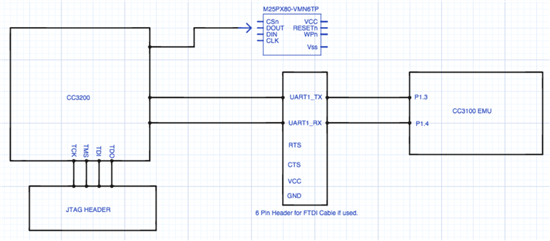Hi,
I'm trying to design a board that uses the CC3200 to communicate to other devices via I2C. I'm still pretty new to all this and I'm trying to understand how everything works/ is connected together.
I want to make my board as compact and simple as possible. However, looking at the launch pad design it has an FTDI emulator/ JTAG/SWD SWITCH circuit. My goal is to program the MCU over the cloud (I'm still unsure if the CC3200 is capable of this, or if it must be connected to the host computer can someone confirm?).
Thus, I find it unnecessary to have this extra circuit on my board. I was wondering I can remove that and just use the JTAG pins and use an external emulator. However, Many of these JTAG emulators seem to be 14/20pins. Thus, how is the JTAG pins actually connected to an external emulator? I have been looking online for more details and I see that others have suggested the XDS100 to program/debug, but unsure how exactly would this be connected. However, using this, will I still be able to flash the board? I read around and read something about a flash gang programmer, but I wasn't able to get much information on that. Is there a simpler way around this, or must an FTDI be used?
Thanks for all the help!


